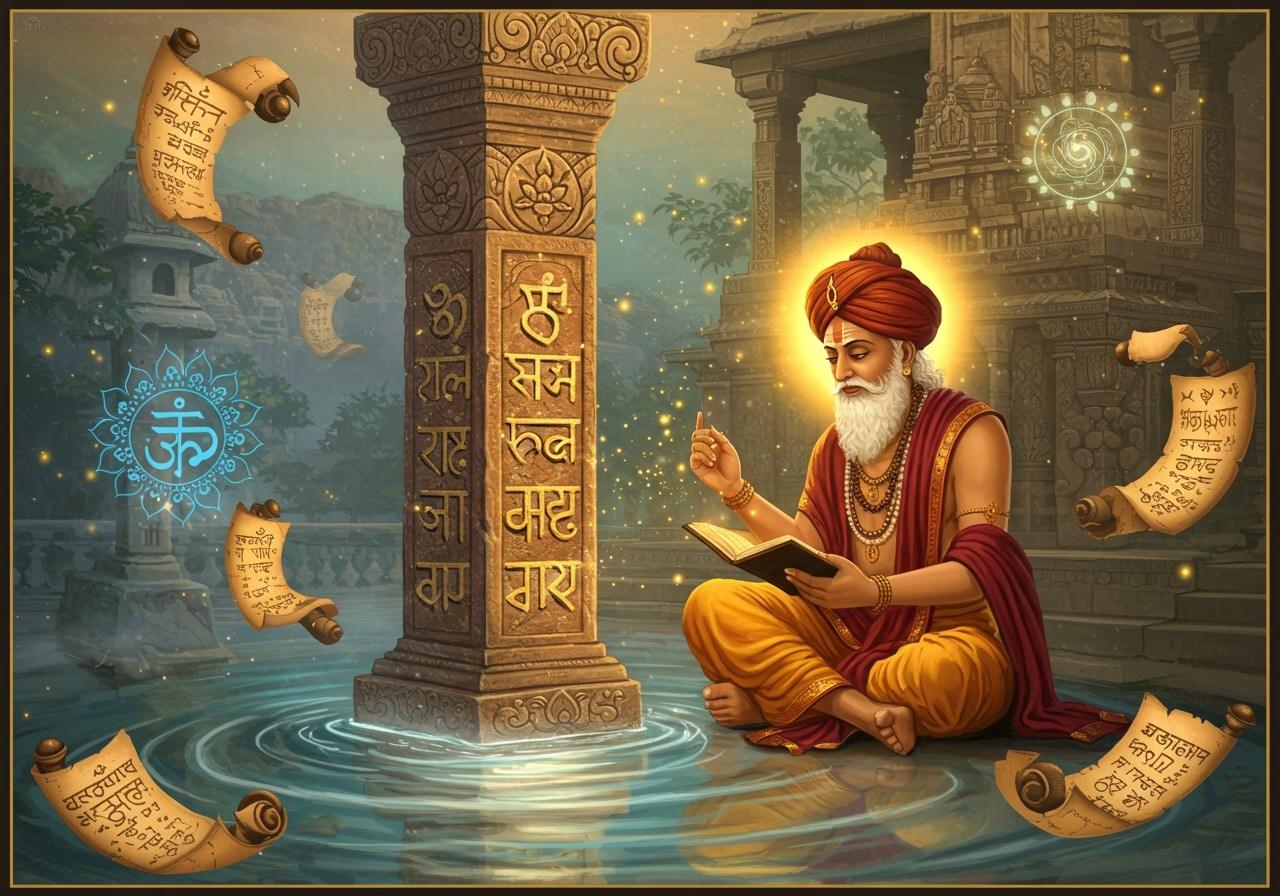
The Brahmi script, an ancient writing system originating in India around the 3rd century BCE, holds immense importance in understanding Indian history and culture. Used to convey royal decrees and document significant events, Brahmi offers a glimpse into the socio-political landscape of ancient India. Its influence extends to many modern South and Southeast Asian scripts, making its study essential for comprehending the evolution of language in the region.
Origins and Evolution
Emerging around the 3rd century BCE, Brahmi’s origins have been linked by some theories to Semitic scripts. Its development involved regional variations, spreading across the Indian subcontinent and influencing the evolution of scripts like Devanagari, Tamil, and Sinhala. This geographical spread underscores its significance in shaping written communication across diverse cultures.
Brahmi on Ashoka’s Pillars: Edicts and Teachings
Emperor Ashoka, a pivotal figure in Indian history, utilized Brahmi script for inscriptions on his pillars. These inscriptions, known as edicts, served to disseminate Buddhist principles and moral guidelines throughout his empire. Prominent examples of Ashoka’s pillars bearing Brahmi inscriptions can be found in Sarnath and Delhi, providing valuable insights into his reign and the spread of Buddhism.
Deciphering the Script: A Scholarly Endeavor
Deciphering Brahmi was a complex process involving scholars like James Prinsep. Linguistic and contextual challenges made interpretation difficult. However, successful decipherment has unlocked a wealth of knowledge, providing crucial historical data. These inscriptions offer valuable insights into ancient Indian society, governance, and daily life.
Content and Significance of Brahmi Inscriptions
Brahmi inscriptions encompass a range of content, including royal decrees, religious texts, administrative records, and even personal correspondence. These inscriptions, carved on durable surfaces like stone and metal, offer a unique window into the socio-political and cultural fabric of ancient India. They highlight significant events, religious practices, and the daily lives of people from that era.
Modern Relevance: A Legacy of Language
Brahmi script’s impact extends to modern Indian scripts and languages. Studying Brahmi deepens our understanding of India’s rich heritage and linguistic diversity. Ongoing efforts to preserve and study these inscriptions, aided by technology, ensure the knowledge embedded within Brahmi continues to inform and inspire future generations. Its influence is evident in scripts like Devanagari, Tamil, and Sinhala, demonstrating its lasting impact on communication in the region.
Ancient Indian Inscriptions: A Treasure Trove of Historical Data
Ancient Indian inscriptions, often written in Brahmi script, provide a wealth of information about rulers and empires. These inscriptions, found on various surfaces like pillars, rocks, and caves, document the reigns of dynasties like the Shungas (around 2nd century BCE), Satavahanas (around 2nd century BCE to 2nd century CE), Shakas (around 1st century BCE to 4th century CE), Kushanas (around 1st to 3rd century CE), Guptas (around 4th to 6th century CE), and Hunas (around 5th to 6th century CE). The edicts of Ashoka, dating back to around 250 BCE, stand as the earliest undisputed evidence of writing in the Indian subcontinent, offering valuable insights into his reign and policies. These inscriptions commemorate conquests, religious ceremonies, and other significant events, offering a glimpse into the political, religious, and social dynamics of ancient India.
Poojn.in: Connecting You to India’s Ancient Script Heritage
Poojn.in, India’s leading cultural goods and services store, provides a unique opportunity to connect with the legacy of Brahmi script. We offer a curated collection of items ideal for those interested in exploring ancient Indian writing traditions:
-
Tulsi Kanthi Mala: Traditionally used for prayer and meditation, these malas can enhance your connection to ancient practices while appreciating the craftsmanship involved in their creation. Explore our range of Tulsi Kanthi Malas at Poojn.in.
-
Bel Mala: These malas, made from the wood of the Bel tree, hold significance in Hindu rituals and can be a meaningful addition to your spiritual practice. Discover our collection of Bel Malas at Poojn.in.
-
Shiva Lingam: Representing Lord Shiva, these lingams are used for worship and meditation. Poojn.in offers a variety of Shiva Lingams crafted from different materials, allowing you to choose one that resonates with you.
For bulk orders of educational materials or specific requirements, our customer service team is available to assist you. We ensure secure packaging and delivery across India to protect these delicate items. Visit Poojn.in or contact our support team to discover more about our collection and delve into the fascinating world of ancient Indian scripts.
FAQs: Delving Deeper into Brahmi Script
What is the significance of Brahmi script in understanding ancient India? Brahmi script is crucial for understanding ancient India as it provides direct access to historical records, royal decrees, and religious texts, offering invaluable insights into the past.
How has Brahmi script influenced modern Indian languages? Brahmi is the ancestor of many modern Indian scripts, including Devanagari, Tamil, and Telugu, shaping the way languages are written today.
Where can I find more information about Brahmi script inscriptions? You can find more information about Brahmi script inscriptions at museums, archaeological sites, and online resources dedicated to ancient Indian history and epigraphy. Poojn.in also offers books and resources on ancient Indian scripts.


